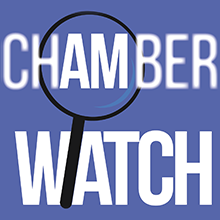The Gilded Chamber
Despite the U.S. Chamber of Commerce’s claims to represent 3 million businesses, just 64 donors anonymously funded more than half of its $179.4 million in 2012 revenues, according to a new Public Citizen report, “The Gilded Chamber: Despite Claims of Representing Millions of Businesses, the U.S. Chamber of Commerce Gets Most of Its Money From Just 64 Donors.”
Among the eye-popping numbers, the average contribution to the U.S. Chamber was $111,254, with the top 43 entities combining to donate $80.4 million. The smallest 781 donors together gave about two-thirds of the $12.2 million given by the largest two donors. The Chamber had 1,523 donations for $179.4 million, while its affiliated Institute for Legal Reform (ILR) had 96 donations for $43.6 million – an average of $454,110 each.
These numbers create as many questions as they answer. Who gave $7.2 million to the U.S. Chamber, and what did they get out of it? What do 548 entities giving between $5,000 and $10,000 to the Chamber get when other corporations are giving much more? What does the Chamber do when their interests conflict? Is $10,000, the most commonly given amount, the cost of membership? If so, does that negate the Chamber’s claim to “[represent] the interests of more than 3 million businesses,” as it claims on its website?
What is it about the ILR’s agenda that makes it even more of a magnet for the very wealthiest donors than the U.S. Chamber itself?
One thing is clear: The funding profiles of the U.S. Chamber of Commerce and its Institute for Legal Reform demonstrate that their existence relies on those who can write the largest checks. The extent to which they are supported by the most powerful corporations is different, as the Chamber does have a range of donation sizes, including nominal input from smaller businesses. But the biggest checks at the Chamber still come from a relatively small group of entities. Where the largest companies have interests that conflict with those of the smaller companies, it seems clear who wins in the workings of the Chamber.
Americans’ voices are drowned out by the access the U.S. Chamber and ILR – mostly backed by what must be millionaires and billionaires – have to the federal government and state governments around the country.
About 1,600 entities are financing the largest corporate lobbying group and the ILR. In 2012 more than half of the U.S. Chamber’s and ILR’s money came from 64 supporters and 21 supporters respectively, who were able and willing to collectively donate about $121 million in one year – which speaks volumes about the two groups’ influences.
Sam Jewler is the communications officer for Public Citizen’s Chamber Watch program.
